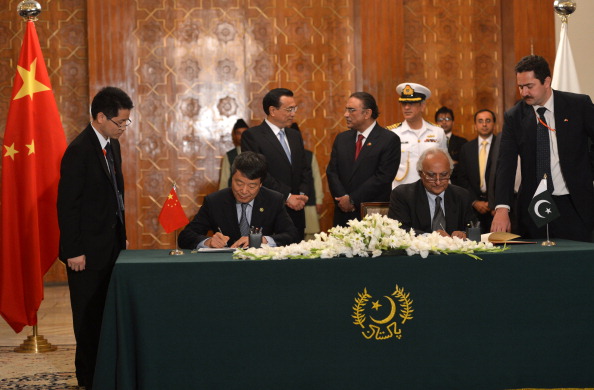
Pakistan and China have long-established diplomatic and military ties and are now entering an epoch of developing an economic relationship with the China-Pakistan Economic Corridor (CPEC). Their partnership has established an example for the world of how states with geographical proximity but differing political, social, economic, and ideological values can establish a cooperative bilateral relationship. Pakistan’s Prime Minister Nawaz Sharif has characterized the relationship as “higher than the Himalayas and deeper than the deepest sea in the world, and sweeter than honey.” However, the success of the China-Pakistan trade corridor is vital to maintaining the relationship.
The financing and the operation of the Gwadar Port is a clear indication of how necessary it is to integrate Pakistan and China economically. Increasing economic integration will help fulfill the national interests of both countries. Chinese Prime Minister Li Keqiang stated, “we hope to create a giant economic corridor that would not only enhance China’s strategic significance but would also help in restoring peace and stability to Asia.” China has been intelligent in formulating the trade corridor. China and Pakistan benefit from their geographic locations. The development of the corridor highlights how trade routes, especially for transportation through the sea, have become increasingly important for world affairs.
The growing volume of trade will necessitate an increased volume of maritime trade. With growing economic needs, China and India (along with other regional countries) are looking for every possible opportunity to increase investment. Here is a look at how CPEC will benefit countries in the region.
Central Asia: After the Gwadar Port is completed, the 1,400km Trans-Afghan Gas Pipeline (TAPI) will deliver and pump natural gas from Turkmenistan to parts of Pakistan. The pipeline will connect to Gwadar Port, which will make it easier to export proven reserves in Central Asia – in particular Uzbekistan, Tajikistan, and Turkmenistan.
China: CPEC will help build up its western region. The area, already having abundant cheap labor, big markets, and resources, can then be industrialized and expanded.
Afghanistan: The country’s oil, gas, and mineral resources, if explored and exploited, can trigger an economic bustle which will then require sea routes, for which access via Gwadar will become an imperative.
Pakistan: In need of an economic revival, Pakistan (including the province of Balochistan) is going to be moving towards a stronger economy. Road building projects eventually will connect the area of Balochistan with Afghanistan and Central Asia. Furthermore, Gwadar port occupies a strategic location near shipping routes to and from the Persian Gulf. Trade from different industrialized regions of Pakistan would flow from this port increasing revenues.
Every emerging or growing country faces challenges when it is in the transition phase of economic development. China and Pakistan have the opportunity to create connections, which if worked as planned and without any disruptions, will strengthen the Asian economy as a whole. Dr. Saleem wrote, “the new Peking Man has a singular goal – to double, triple and quadruple China’s $4 trillion GDP by 2050. And, any country that can help China go where it wants to go is a friend – or you are on your own.”
However, progress on CPEC is not without hindrances, which include:
The India Factor: Today, Pakistani–Chinese diplomatic engagement follows a pattern that has been called a “subtle partnership.” It does “the minimum necessary to preserve Pakistani security from a distance, but it has sought to avoid all overt entanglements” in Islamabad’s challenges to Indian primacy in South Asia. Closer economic relations between China and Pakistan risk irking India.
Terrorism and Protection of Chinese Personnel: Terrorism has created an environment unwelcoming to commercial activities, along with concerns about the potential harm Chinese development project workers may face. China may become risk-averse. Upon the request of the Chinese Prime Minister, the Prime Minister of Pakistan has announced the establishment of a “high-profile force” for their protection.
India-Iran Chabahar Port: India has two major objectives in this regard. One is encirclement through the establishment of friendly relations with Afghanistan and Iran. The second is to counterbalance China through strengthened ties with the United States. But the port will also serve as competition to CPEC and the Gwadar route.
CPEC’s future in terms of its gains, losses, and benefits at the national and regional levels will define its success in the coming years. Political economist Robert Gilpin has an argument that states will pursue an approach of “benign mercantilism,” which I believe will hold true for Pakistan and China. With this project, Pakistan has been given the opportunity to deepen economic cooperation with an allied partner, which has an important status in international relations.
***
Image: Aamir Qureshi-AFP, Getty


